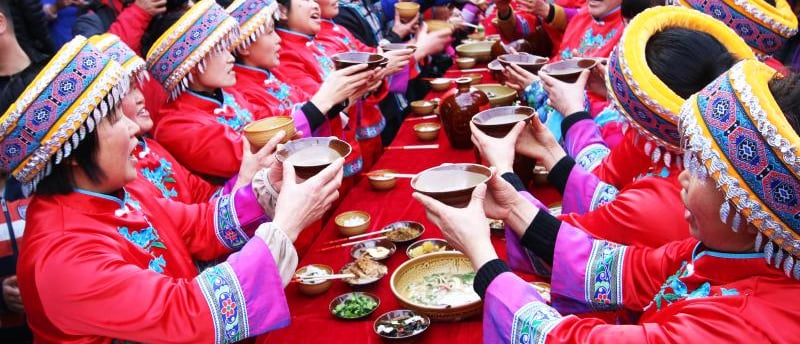过赶年; Tujia "Rushed" New Year
The Tujia people celebrate the Lunar New Year a day before the actual day. Why is that so?
7/10/20242 min read


Photo credit: 光明网
The New Year celebration is the most important festival for the Tujia people, far more grand in both content and form than any other Tujia festival, and also lasts the longest.
In Xiangxi, the Tujia people have preserved the tradition of celebrating the "Gan Nian" or “Rushed New Year” custom to this day. The Tujia New Year (in Tujia language: Qilao Gaga) is the most significant festival for the Tujia people in Xiangxi. It is observed on the 29th day of the twelfth lunar month, or the 28th day if the month is short, because it is always celebrated one day ahead of the Han Chinese New Year, hence the name "Gan Nian”. The event is divided into three phases:
The first is the preparation phase, which starts on the 23rd day of the twelfth lunar month and runs up to the day of "Gan Nian," with specific preparations scheduled for each day.
The second is the deity-honoring phase, which occurs around 3 p.m. on the day of "Gan Nian," where offerings are made in sequence to ancestral spirits, Duke Peng, the Kitchen God, the Earth God, the Four Officials Gods, and the Door Gods.
The third is the official celebration of "Gan Nian," where family members of all ages gather to eat the reunion dinner, singing toasting songs while dining, creating a lively atmosphere. After the meal, the family gathers around the hearth to keep the New Year's watch by a bustling fire. As the dawn approaches, the activities begin with setting off firecrackers, fetching water, operating the millstone, and more.
The Tujia New Year originated in the mid-Ming dynasty and was widespread by the late Ming, early Qing dynasties, and the Republic of China era. Records from the Qianlong era’s "Yongshun Prefecture Record" and the "Yongshun County Record" indicate this, as does the Tongzhi nine year (1870) “Yongshun Prefecture · Longshan County Customs Record,” which states: "Tujia people celebrate their New Year, marking it on the 29th if the month is long and the 28th if short. It is said that this was initially decreed by a local leader who commanded the troops on removal day, asking the locals to celebrate the New Year in advance, which then became a tradition.” The "Gan Nian" of the Tujia not only has its unique timing but also includes a variety of long-lasting festive activities such as making rice cakes, forming sweet dumplings, inserting cedar-plum decorations, pasting Door Gods, enjoying the reunion dinner, and staying up all night.
The "Tiao Nian Meeting" of the Tujia people generally starts from the third day of the first lunar month and lasts several days and nights. The highlight is the “Bai Shou Dance,” along with other activities like wrestling with buffalo horns, pole-pushing, and egg-snatching competitions. In recent years, the "Tiao Nian Meeting" has become increasingly popular, featuring dragon dancing, knife performances, and mountain song singing. The local government has capitalized on this cultural advantage by organizing several trade fairs, significantly promoting local ethnic trade development and invigorating the cultural and economic market.
